Pintucks in sewing are more than mere stitches on fabric; they are delicate, elevated folds that add a touch of elegance and artistry to the world of textiles.
These parallel rows of miniature tucks, created by skillfully folding and stitching, are the subtle yet captivating details that elevate garments, home decor, and accessories. Pintucks offer a unique way to infuse texture, design, and historical charm into your sewing projects.
Whether they adorn a Victorian-inspired blouse, a modern cushion cover, or a vintage-inspired wedding gown, pintucks remain a timeless and cherished element in the craft of sewing.
In this exploration, we unveil the beauty and versatility of pintucks, unlocking the secrets to creating these exquisite fabric accents.
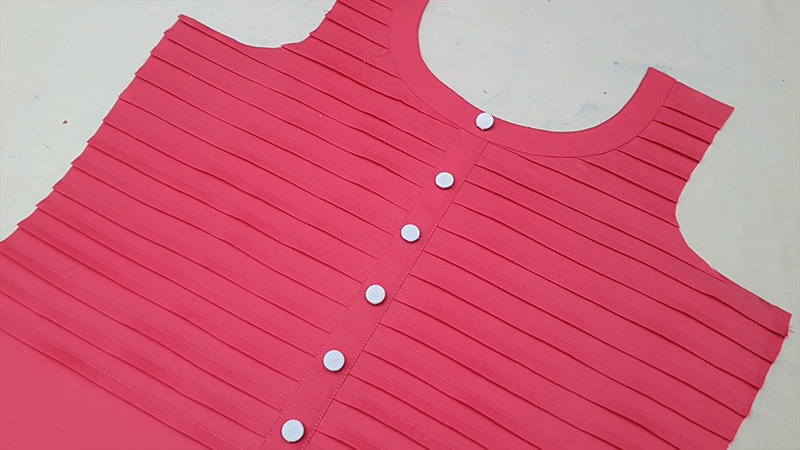
What Is a Pintuck in Sewing?
A pintuck in sewing is a decorative technique where fabric is folded and stitched to form parallel rows of raised tucks or folds. These precise rows add texture and visual interest to garments, home decor, and accessories.
Pintucks can be created using a sewing machine or hand stitching, with adjustable tuck widths and spacing to achieve various design effects.
They are often used to enhance the elegance of clothing, especially on bodices, cuffs, and collars, and can elevate the sophistication of items like pillow covers and tablecloths.
Pintucks require attention to detail and creativity, making them a timeless and cherished element in the world of sewing, adding a touch of refinement to any project.
What Is the Purpose of Creating Pintucks in Sewing?
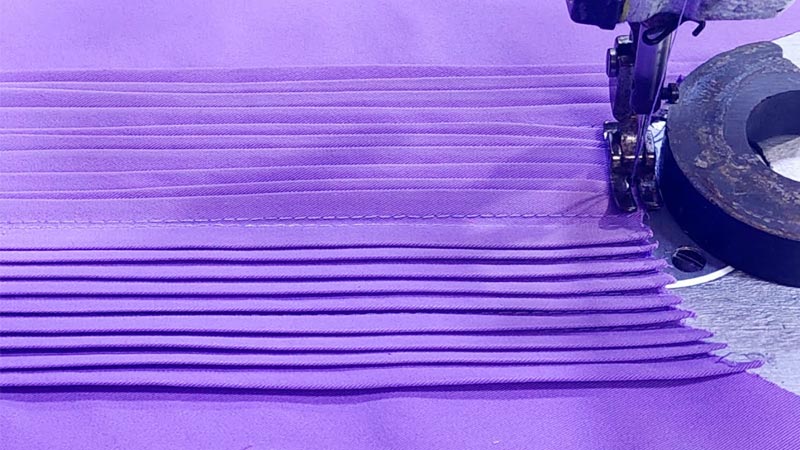
The creation of pintucks in sewing serves both aesthetic and functional purposes, making them a versatile and valuable technique in fabric crafts.
Here’s the purpose of creating pintucks:
Decorative Embellishment
Pintucks are primarily used for their decorative value. They add a touch of sophistication and elegance to fabric items, making them visually appealing and stylish.
Pintucks can transform plain fabric into intricate and eye-catching pieces, enhancing the overall aesthetics of the project.
Textural Interest
Beyond their visual appeal, pintucks create a delightful tactile dimension. The raised tucks or folds on the fabric’s surface offer a unique texture that engages the sense of touch.
This textural interest can make garments more interesting to wear, adding a subtle element of comfort and luxury. Home decor items like pillow covers and tablecloths, add depth and coziness.
Design Variation
Pintucks offer a canvas for creative expression. By adjusting the width and spacing of pintucks, you can create a variety of design effects.
Whether you opt for evenly spaced pintucks for a classic look or experiment with asymmetrical patterns, pintucks offer endless possibilities for personalization and customization.
They can be used to introduce patterns, geometric shapes, and other design elements into your sewing projects.
Tailoring and Structure
In clothing construction, pintucks can be strategically placed to add structure and tailored detailing. They can highlight specific areas of a garment, such as cuffs, collars, yokes, or bodices, giving the clothing a polished and professional appearance.
Pintucks help maintain the shape and structure of the fabric, contributing to the overall fit and style of the garment.
Historical Elegance
Pintucks have a rich history in the world of fashion and have been used for centuries to add intricate detailing to garments. By incorporating pintucks into modern sewing projects, you can pay homage to this historical elegance and fashion tradition.
They provide a link to the past and add a sense of timeless sophistication to your creations.
How Are Pintucks Created in Sewing?
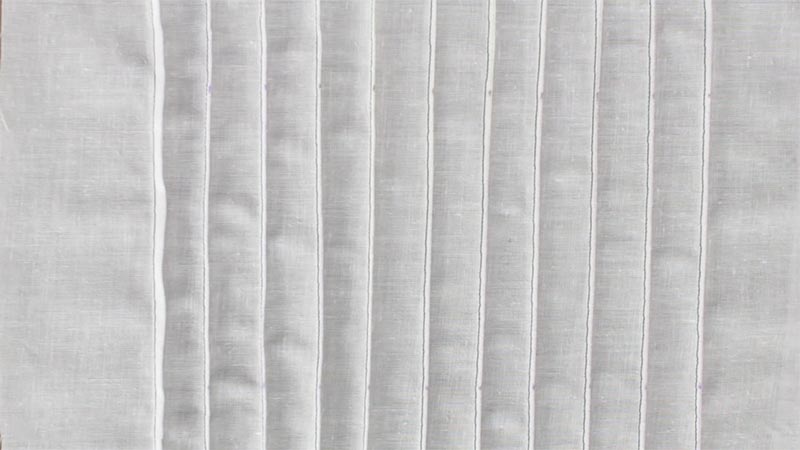
Pintucks in sewing are a delightful way to add texture and visual interest to fabric projects, whether it’s clothing, home decor, or accessories. Creating pintucks requires a certain level of precision and technique, but the process can be quite rewarding.
Here’s a step-by-step guide on how to create pintucks in sewing:
Materials You’ll Need
- Fabric of your choice.
- Thread that complements or contrasts with your fabric.
- Sewing machine or a needle if you’re sewing by hand.
- Straight pins.
- Measuring tools (ruler, measuring tape).
- Marking tools (chalk, fabric marker, tailor’s chalk).
- An iron and ironing board.
The Process:
Mark Your Fabric
Start by measuring and marking the locations where you want to create pintucks. The spacing between these marks will determine the width of your pintucks. You can use chalk, fabric markers, or tailor’s chalk for accurate marking.
Fold the Fabric
To create a single pintuck, fold the fabric along the marked line with the wrong sides facing each other. If you want to make multiple pintucks, repeat the folding process for each marked line.
Secure with Pins
Use straight pins to secure the folded fabric in place. Make sure the pins are inserted perpendicular to the fold, ensuring that the fabric remains aligned and positioned as you sew.
Stitch Along the Fold
Set your sewing machine to a straight stitch or use a running stitch if sewing by hand. Begin sewing along the fold, removing the pins as you go. It’s crucial to stitch as close to the folded edge as possible to secure the pintuck in place.
You can adjust the stitch length and tension based on your desired effect.
Repeat as Desired
Continue this process for each marked line to create multiple pintucks. Consistency in spacing and stitching is essential to maintain a neat and uniform appearance.
Press the Pintucks
After sewing, press the pintucks with an iron. This step is essential for flattening and setting them, resulting in a crisper appearance. Using steam while ironing can help achieve better results, but make sure your fabric is steam-friendly.
Finishing Touches
Depending on your project, you may need to trim any excess fabric from the back of the pintucks. Additionally, finish the raw edges to prevent fraying, especially for garments that will undergo wear and washing.
What Are the Different Types of Pintucks in Sewing?
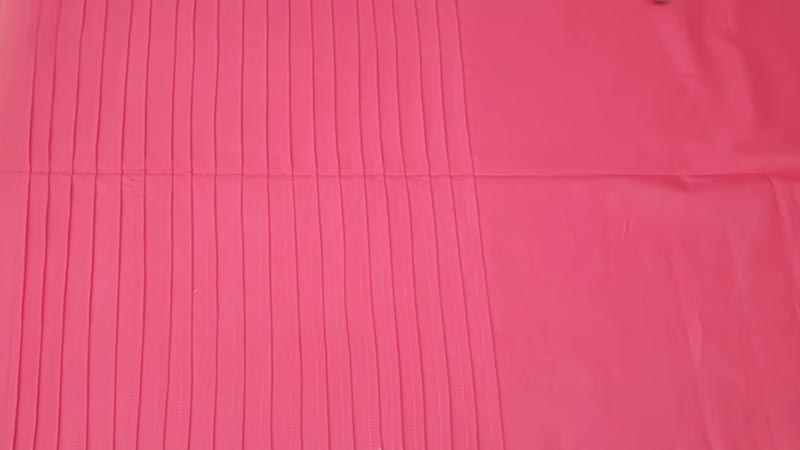
In the realm of sewing, pintucks are a versatile and creative technique that can be adapted in various ways to achieve different styles and effects.
Here are several types of pintucks commonly used in sewing:
Standard Pintucks
These are the classic, evenly-spaced parallel rows of tucks created by folding and stitching the fabric. Standard pintucks provide a timeless and elegant appearance, often seen in formal attire.
Spaced Pintucks
Spaced pintucks involve creating tucks with gaps in between, resulting in a lighter and airier look. They are ideal for delicate and feminine designs.
Cluster Pintucks
Cluster pintucks feature multiple rows of tucks placed closely together. This style creates a dense and intricate texture, adding depth and complexity to the fabric.
Shadow Pintucks
Shadow pintucks involve sewing two parallel lines of stitching on either side of a central fold. The result is a three-dimensional effect, giving the pintucks a shadowed appearance.
Decorative Stitch Pintucks
In this variation, decorative stitches are used to create pintucks, instead of the standard straight stitch. This adds an extra layer of design intricacy to the fabric, making the pintucks stand out.
Angled Pintucks
Angled pintucks are sewn at an angle across the fabric, introducing a dynamic and unique design effect that adds movement to the material.
Layered Pintucks
Multiple rows of pintucks are created, one on top of the other, forming a layered and textured surface. Layered pintucks add richness and complexity to the fabric, making it visually appealing.
Curved Pintucks
Curved pintucks involve creating tucks in gentle curves and waves instead of straight lines. This style imparts a soft and flowing element to the fabric, making it suitable for romantic and whimsical designs.
Bias Pintucks
Bias pintucks are created on the bias grain of the fabric, resulting in a diagonal pattern. This type of pintuck adds a dynamic and visually interesting element to the material.
Offset Pintucks
Offset pintucks are created by staggering the tucks so that they are not perfectly aligned. This imparts a dynamic and irregular texture to the fabric, adding a touch of whimsy.
Scalloped-Edged Pintucks
Scalloped-edged pintucks feature tucks with scalloped or shaped edges, creating a decorative and ornate border along the fabric. This style adds an extra touch of elegance.
Colored Pintucks
Using a contrasting thread color, you can create pintucks that stand out and add a pop of color to the fabric. Colored pintucks provide a vibrant and eye-catching effect, especially on neutral or monochromatic fabric.
What Are Some Common Applications of Pintucks in Sewing?
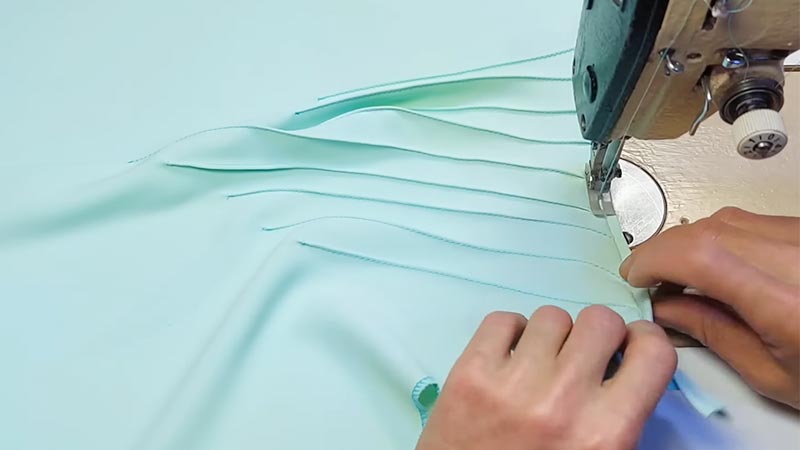
Pintucks in sewing are a versatile technique that can be applied in various ways to enhance the aesthetics and functionality of fabric projects.
Some common applications of pintucks include:
Clothing
Pintucks are frequently used to embellish clothing items, such as blouses, shirts, dresses, and skirts. They can be added to cuffs, collars, bodices, yokes, and hems, enhancing the overall design and providing a tailored and elegant look.
Lingerie
Pintucks are a popular choice for lingerie and intimate apparel. They add delicate texture and a touch of sophistication to items like camisoles, nightgowns, and lingerie sets.
Home Decor
Pintucks can be applied to home decor items, including pillow covers, duvet covers, curtains, and tablecloths. They introduce a decorative element and create a cozy and inviting atmosphere in your living spaces.
Children’s Clothing
Pintucks are commonly used in children’s clothing, adding a charming and classic touch to dresses, rompers, and shirts. They can create a timeless and innocent aesthetic.
Accessories
Pintucks can be incorporated into accessories like scarves, handbags, and headbands, providing a stylish and textured look. They add a unique and eye-catching element to accessories.
Historical and Period Costumes
Pintucks are often used to create historical and period costumes, replicating the fashion styles of specific eras. They add authenticity and detail to these unique and elaborate designs.
Quilting
Pintucks can be a creative element in quilting, providing texture and design variation in quilted projects. They can be used to create intricate patterns or simply add depth and dimension to the fabric.
Bed Linens
Pintucks can enhance the appearance of bed linens like sheets, shams, and bedspreads, adding a touch of luxury and elegance to the bedroom.
Handkerchiefs
Pintucks can make handkerchiefs more decorative and stylish, whether for personal use or as thoughtful gifts.
Napkins
Cloth napkins for special occasions or everyday use can be enhanced with pintucks, adding an elegant touch to the dining table.
Special Occasion Garments
Pintucks are often featured in special occasion garments, such as wedding dresses, bridesmaid gowns, and evening wear. They provide a refined and upscale appearance to these outfits.
Baby Clothing
Pintucks are a popular choice for baby clothing, creating sweet and delicate designs on items like dresses, rompers, and christening gowns.
Vintage and Retro Fashion
Pintucks are commonly used in vintage and retro-inspired fashion, allowing designers to capture the essence of past eras while adding a modern twist.
Casual and Everyday Wear
Pintucks can be used in casual and everyday wear, offering a subtle and stylish touch to items like T-shirts, skirts, and shorts.
FAQs
Can pintucks be made by hand, or do you need a sewing machine?
Pintucks can be crafted by hand or using a sewing machine, providing flexibility to suit your project and expertise in sewing.
How do you create pintucks with different widths and spacing?
To vary pintuck widths and spacing, mark the fabric at different intervals before stitching. Closer marks result in narrower pintucks, while wider intervals create broader ones.
What are some tips for achieving precise and consistent pintucks?
To achieve precise and consistent pintucks, use appropriate marking tools, measure accurately, and maintain even stitching along the folds. Practice is key to mastering this technique.
What is the historical significance of pintucks in fashion and sewing?
Pintucks have a long history in fashion and have been used for centuries to add texture and elegance to garments, especially in the Victorian era.
Are there any creative variations or designs you can achieve with pintucks?
Yes, pintucks offer a wide range of creative possibilities. You can create patterns, and geometric shapes, or use pintucks to highlight specific areas of a garment or home decor item.
To Recap
In the world of sewing, pintucks emerge as an embodiment of tradition, creativity, and elegance. As we conclude our journey through the realm of pintucks, we recognize the enduring charm they bring to fabric projects.
These delicate, parallel folds have graced garments, home decor, and accessories for generations, connecting the past with the present.
Pintucks provide a canvas for both skilled artisans and novice crafters to express their design sensibilities and breathe life into their creations.
As you embark on your sewing adventures, remember that pintucks are not just stitches; they are the threads of history, style, and innovation, weaving their way into the tapestry of sewing, where beauty and artistry flourish.
Leave a Reply